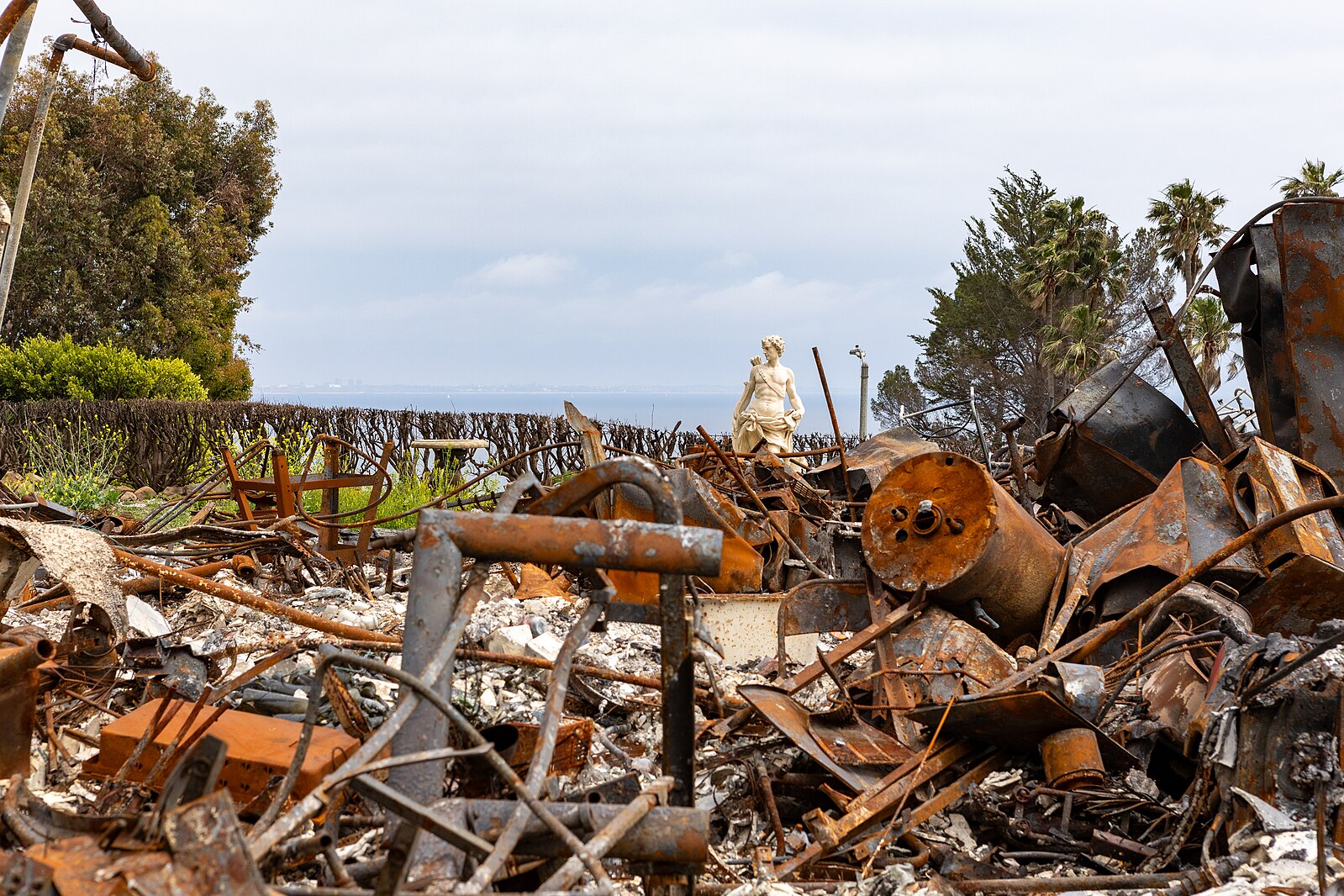Image Credit: Christopher Rosario, Public domain, via Wikimedia Commons
In the aftermath of the Eaton Fire in Southern California, a significant recovery effort is transforming charred debris into valuable materials for rebuilding. The fire devastated neighborhoods, including The Bunny Museum in Altadena, which once housed over 60,000 bunny artifacts. Co-founder Candace Frazee is now focused on salvaging what remains from the destruction.
Steel from the fire-ravaged properties is being collected, compacted, and sent to recycling facilities. Here, it is melted down and repurposed into new products, including structural beams and automotive components. The Global Steel Climate Council highlights that steel is the most recycled material globally, with the U.S. recycling between 60 to 80 million tons of scrap steel annually. This process not only aids recovery but also helps mitigate carbon emissions; for instance, recycling a single refrigerator can prevent 215 pounds of CO2 from entering the atmosphere.
In addition to steel, crushed concrete from destroyed buildings is stacked high in Altadena, where it is repurposed for use in roads and construction sites. Recycling concrete diminishes the need for extracting fresh raw materials, thereby reducing environmental impact. Though the carbon footprint reduction may not be drastic, the environmental benefits are noteworthy, particularly in diverting rubble from landfills.
The fire also resulted in the loss of numerous trees, but some are being repurposed. Usable logs are sent to mills for lumber, while unusable wood is transformed into mulch for organic soil amendment. This approach not only aids in rebuilding but also minimizes waste.
The Army Corps of Engineers is overseeing this comprehensive recovery initiative, which is designed to expedite the rebuilding process while limiting environmental impact. By recycling materials instead of sending them to landfills, the operation reduces truck traffic and the associated emissions. Despite some community concerns regarding dust and air quality, the Corps is implementing measures to monitor and mitigate these issues.
As communities in Altadena work to recover from the devastation of the Eaton Fire, the cycle of recycling and renewal is a promising step toward rebuilding and resilience.
Check out the original article here: Source link



